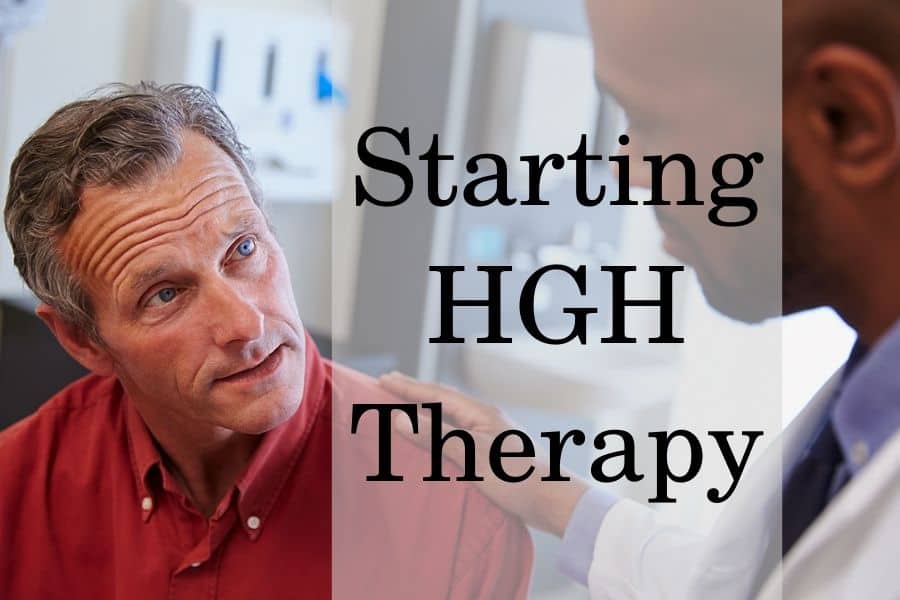
4.8
Human growth hormone (HGH) regulates your metabolism, muscle growth, bone density, tissue recovery, and energy levels. Low GH levels in the body can lead to debilitating symptoms, which can be managed by the administration of recombinant HGH.
Helps your body burn fat, preserve muscle, build bones, heal injuries, improve libido, mood, cognition, and quality of life
The price of HGH ranges from $250 to over $1000 per product
Water retention, edemas, headache, pain in the joints, carpal tunnel syndrome, increased insulin resistance
Human growth hormone (HGH) regulates your metabolism, muscle growth, bone density, tissue recovery, and energy levels. Low GH levels in the body can lead to debilitating symptoms, which can be managed by the administration of recombinant HGH.
Recombinant HGH is a substance regulated by the FDA and its use has strict medical indications. To start GH therapy, you must be diagnosed with one of these indications and receive a legal prescription from a medical doctor. Either a general practitioner or a specialist in endocrinology.
The required documentation for a proper diagnosis and prescription includes previous medical history, growth hormone provocative test results, and pretreatment IGF-1 levels.
Are you a candidate for HGH replacement therapy?
HGH therapy is suitable for both men and women who have medical indications for it. The only difference is that women need a slightly higher dose of growth hormone to stimulate an adequate increase in IGF-1 because estrogen antagonizes its effects.
The best way to determine whether GH treatment is right for you is to consult with a medical specialist
At HFS Clinic we have a team of experienced doctors and endocrinologists who will carefully evaluate your symptoms and confirm if you are a candidate for the therapy.
HGH therapy is an FDA-controlled substance due to its abuse potential as a performance-enhancing drug. Thus, it is not available over the counter and you must have a doctor’s prescription to obtain it legally.
According to the FDA, HGH therapy is approved for the management of:
If you have symptoms of GHD, your doctor will perform a complete medical exam and specific tests such as ITT. If you are diagnosed with the condition, you will receive a legal HGH prescription for the therapy.
What to expect when starting HGH therapy?
When you start HGH treatment, it will take at least a month until there are noticeable benefits. This is the period required for a sufficient effect on insulin-like growth factor 1 (IGF-1) levels according to clinical trials.
The levels of IGF-1 are the main indicator for the effectiveness of GH therapy because IGF-1 mediates all of the anabolic effects of the growth hormone. GH stimulates its production by the liver, and thus IGF-1 reflects the mean GH levels in the body.
The first benefit of growth hormone is improved body composition. GH stimulates fat breakdown (lipolysis) in the adipose tissues around the waist and internal organs.
Simultaneously the anabolic effects of IGF-1 prevent muscle wasting and might aid hypertrophy and strength gains.
During the second and third months of HGH therapy, the cholesterol profile also improves. HDL levels surge while total cholesterol, LDL, and triglycerides are reduced.
Furthermore, there is an increase in bone mineral density which occurs 4-6 months after the onset of HGH therapy.
Other benefits from HGH include improved libido, erectile function in men, hair growth, mood, cognition, and quality of life
If this is not your first therapy and you have been on growth hormone before, you are likely to experience the same benefits once again, either at the same or a higher dosage.
Increased bone density is the only benefit that might persist after the end of the therapy.
What are the side effects of taking HGH?
Adverse reactions occur mostly at high doses of growth hormone and may include:
- Water retention and edemas
- Headache
- Pain in the joints
- Carpal tunnel syndrome (temporary)
- Increased insulin resistance
How long HGH therapy should last?
There is no specific recommendation on how long you should take HGH. On average it takes from 4 to 8 weeks to notice the first results of growth hormone injections.
Your doctor will decide whether or not you should continue your treatment depending on its effectiveness and the adverse reactions you might have experienced.
If the condition that led to your symptoms and low GH levels is permanent, then once you quit the therapy, most if not all of your symptoms will likely return. And your GH levels will return to pretreatment levels.
The length of the therapy and your dosage will determine its total cost. The price of HGH ranges from $250 to over $1000 per product. It depends on whether the GH comes in a vial as a white powder or as prefilled pens and cartridges.
Any additional expenses include a medical exam and diagnostic test which cost about $100 each. They are required to receive a doctor’s prescription for legal treatment.
Advice to patients about HGH treatment
The success of the treatment requires that you handle and administer the growth hormone properly. Growth hormone has a peptide structure that can be easily broken down by heat, freezing, direct sunlight, or even excessive shaking.
Some GH products must be stored in a refrigerator, while others can be stored at room temperature for 3-4 weeks. Vials require reconstitution with bacteriostatic water before injection.
The used vial can be refrigerated and growth hormone will remain usable for 14-28 days thanks to the preservatives in the diluent. Your doctor will provide you with complete information on how to use HGH injections, where and how to store them correctly.
Subcutaneous HGH injections are the method of choice because it ensures good bioavailability and stable plasma levels according to studies. Besides, it is a much more convenient method for self-administration at home compared to the other methods.
The best skin sites for subcutaneous injections are the abdominal area, upper arm, upper hip, and thighs. The sites should be rotated every time due to the risk of lipoatrophy at the spot in case of repeated use.
HGH therapy requires daily subcutaneous injections taken before bed to mimic the natural pulsatile secretion of the hormone as closely as possible
Get a free consultation with our medical expert for any questions about hormone replacement therapy


